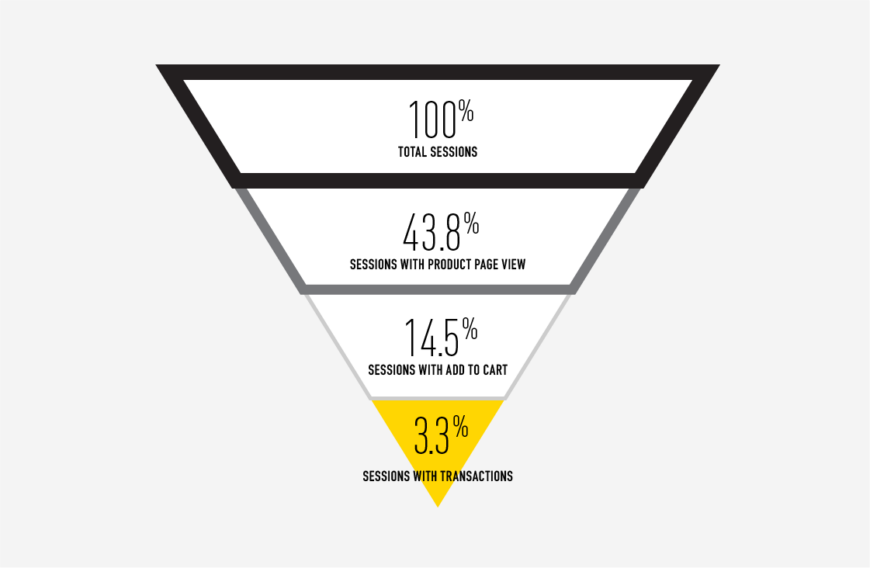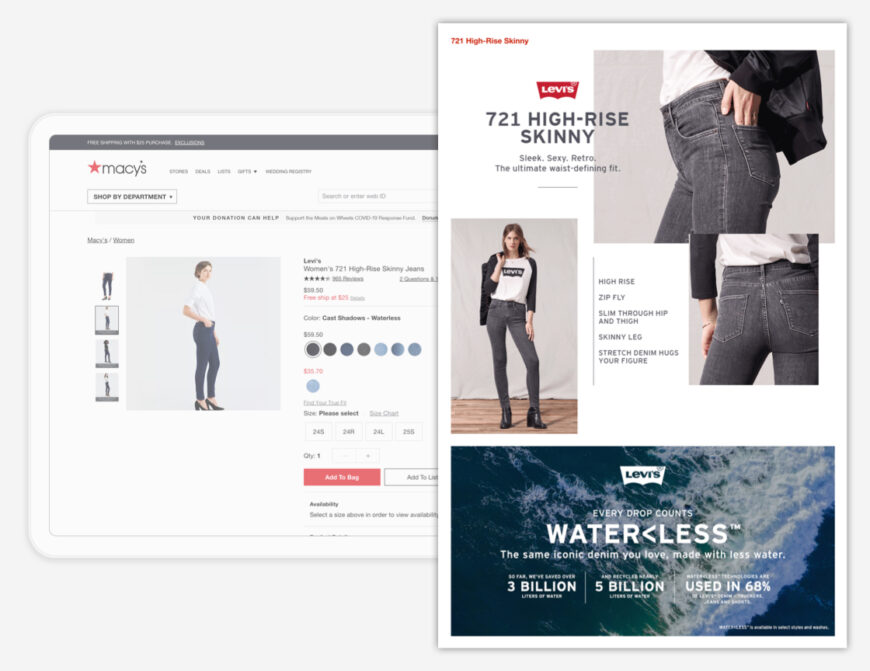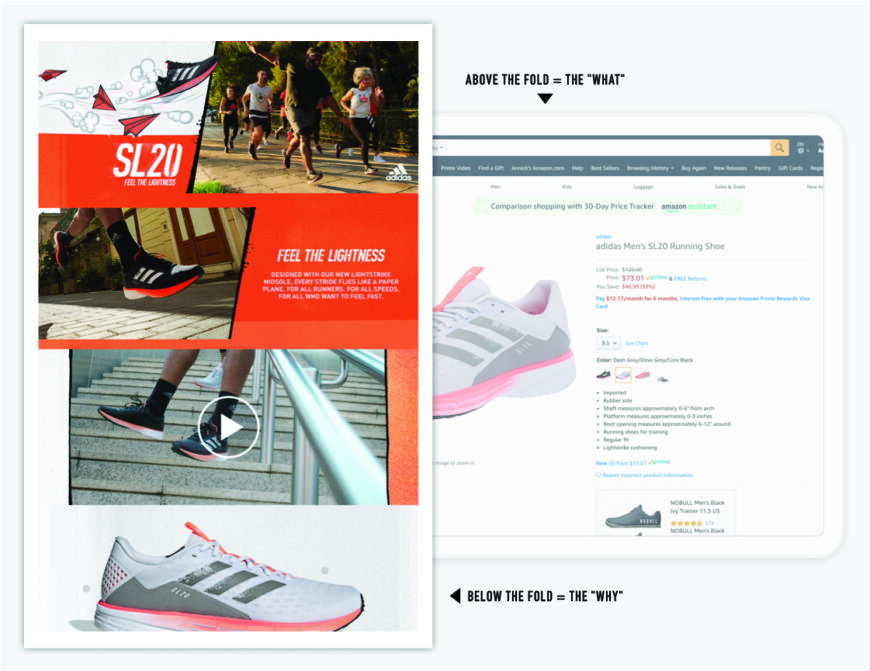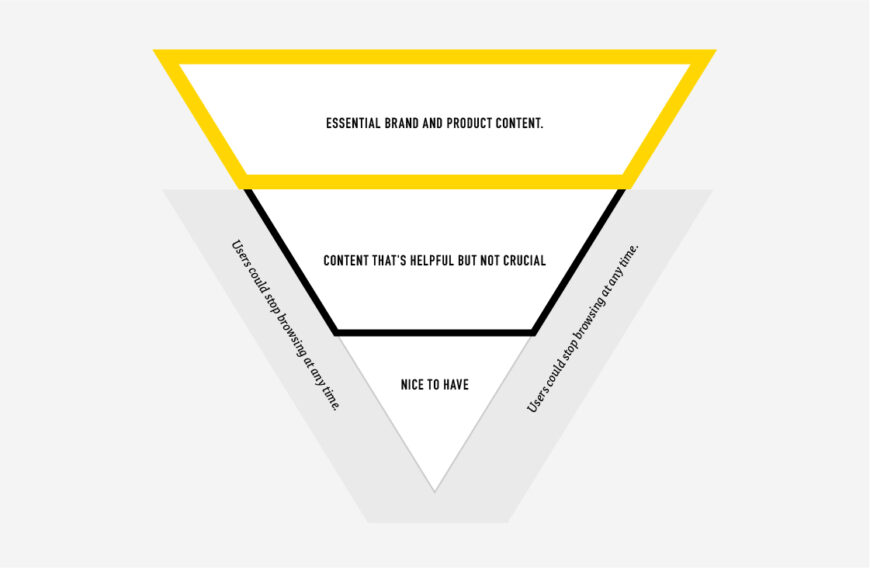Product Display Pages: The Secret to Boosting Online Sales and Brand Equity
In a crowded and unruly marketplace, uncover the secret-weapon smart brands use to cut through the digital clutter.
In a crowded and unruly marketplace, uncover the secret-weapon smart brands use to cut through the digital clutter.
For anyone shopping for goods and services, the internet is like a modern-day wild west. It’s chaotic, inconsistent, and rife with distractions. Enticing headlines, alluring photos, persistent re-targeting ads all clamor for your attention. The digital promised land is forever one click away. But all is not lost. There’s a secret way to boost online sales: enhanced product display page content.
For anyone selling in this hyper-competitive environment, keeping consumers engaged, and committed is seemingly impossible amidst the internet noise.
That becomes even more of a challenge for anyone selling on a third-party retail site, like Amazon, Target, or Walmart. Retailers like those are focused on selling all of the brands in your product category (not just yours), not to mention a myriad of other options. And while they may offer a host of tools to give you a competitive advantage – such as search marketing, banner advertising, and sophisticated brand stores – it’s all-but-impossible to keep consumers in your well-crafted sales funnel.
E-commerce Funnel conversion rates according to Smart Insights

If you’ve done your job right and consumers do click through to your product display page (PDP), or better still (from a conversion point of view) land directly there from a browser search, you might be fooled into thinking your work is done. But leaving the critical next step – the crucial moment of conversion – solely to the retailer is a mistake many brands make.
The product display page is where customers go to make informed buying decisions. But in this unregulated landscape, the experience for brands and consumers alike can be intensely frustrating.
Product Display Pages – sometimes referred to as the digital shelf – literally replace the traditional product display in a brick-and-mortar store (so important are they that we’ve written about Product Display Pages before). They are the final virtual touchpoint and the last step before purchase. And since you cannot physically touch and hold the product online, they must convey all of the product’s essential information and convince the customer to add it to their coveted cart. They are also home to the increasingly important customer reviews and ratings – for some, the most critical information on any PDP.
“Your product detail page is the moment of truth – your opportunity to act as the consummate online salesperson…”
– Salsify, “How To Create Enhanced Content eBook.”
Stealthy marketers have realized that the humble PDP is their secret weapon in this electronic showdown. Despite the challenges of the environment, a host of new services are blazing a trail – transforming these barren pages with “enhanced brand content” – putting control back into the hands of brands.
“The paramount goal for your product pages should be to build user confidence by providing all the information necessary for a purchasing decision and making the process as intuitive and straightforward as possible.”
– Rosara Joseph, Content Strategist at VentureWeb
On the content creation side, several companies are offering enhanced PDP syndication platforms, including Salsify, Syndigo, Shopify, and Amazon (via its Vendor Central A+ Pages).
And an increasing number of major retailers are starting to feature syndicated content on their sites, including Amazon, Target, Best Buy, Macy’s, Kohl’s, Costco, and Walmart. There’s a thirst for this kind of content, both from brands eager to stand out and from retailers keen to convert more of their visitors.
Levi’s enhanced PDP content, designed by IRON Creative

Enhanced brand content offers vendors a unique opportunity to differentiate their brand and products from their competitors. While this content lives below the fold – often in a “From the Manufacturer” section – it is typically comprised of rich-media units that provide flexibility and some much-needed brand credibility. While above the fold content gives users the “what” in their decision-making process, Enhanced Brand Content gives them the “why.”
Above the fold: give users the “what”, below the fold give them the “why”

Not only do these features help to improve a brand’s presentation, but they also provide new opportunities to drive traffic to a brand’s catalog and, crucially, they increase conversion rates.
Savvy marketers use enhanced brand content to answer their customer’s most common questions. By expanding their product details and calling out their benefits, they help drive more informed purchase decisions, reducing the likelihood of returns. And since some of the enhanced content is “discoverable,” it boosts SEO, making it more findable (particularly for off-platform search).
Despite these advances, there are only so many pieces of content you can control on a third party’s site. At a minimum, make the most of the space you do have with detailed descriptions of your product, appealing imagery with various product views, and a product video. But if you want to dig a little deeper and truly master the content space, we’ve put together these handy tips.
The “inverted pyramid” model: lead with your most important content

Evaluate the pros and cons of a compare table – which can be one of the most valuable PDP modules

Enhanced Brand Content is designed to put control back in the hands of marketers. And while the platforms themselves are relatively easy to use, you should also consider hiring an expert team to manage your syndication process. Here’s why:
“With leading online retailers reporting that enhanced content can increase conversions up to 36 percent, brands that are not fully leveraging their below-the-fold real estate are missing significant opportunities to make their products stand out and grow sales.”
– Rob Gonzalez, co-founder and VP Business Development at Salsify
The reasons are clear. Brands who effectively create and deploy enhanced Product Display Page content increase their conversions and sell more products. Crucially, they also create branded micro-moments, which are vital in preserving the integrity of their brand as consumers comparison-shop this modern-day wild west. If you haven’t already, it’s high time you created an enhanced brand content strategy. We’d love to help.
At IRON, we’ve been developing proven Amazon marketing strategies – driving sales and building brand equity – for almost ten years. Email us if you’d like to find out how we can help your business to grow at Amazon and beyond.
Drop us a line.
Contact us120 2nd St. Floor 3,
San Francisco, CA 94105